

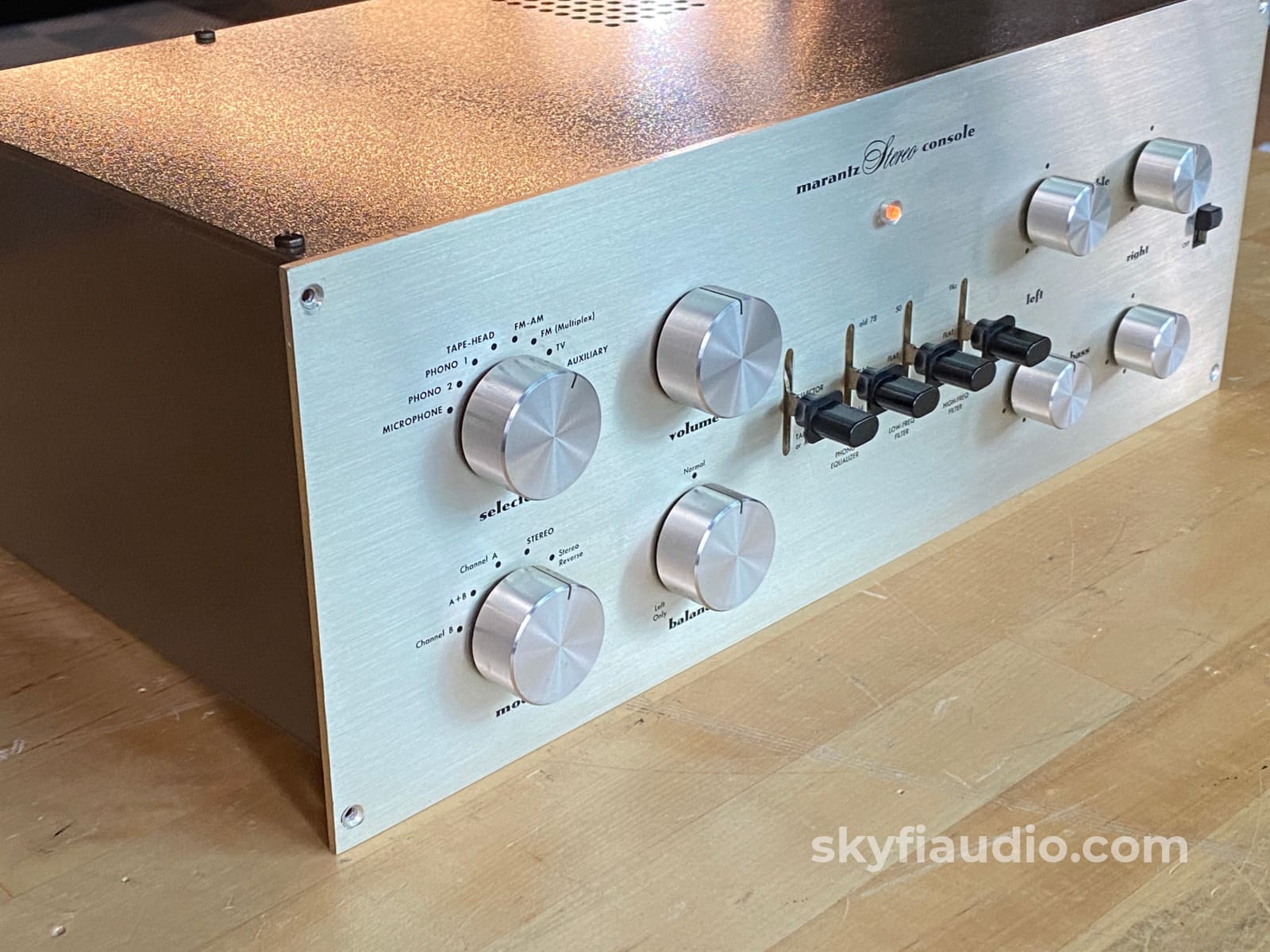
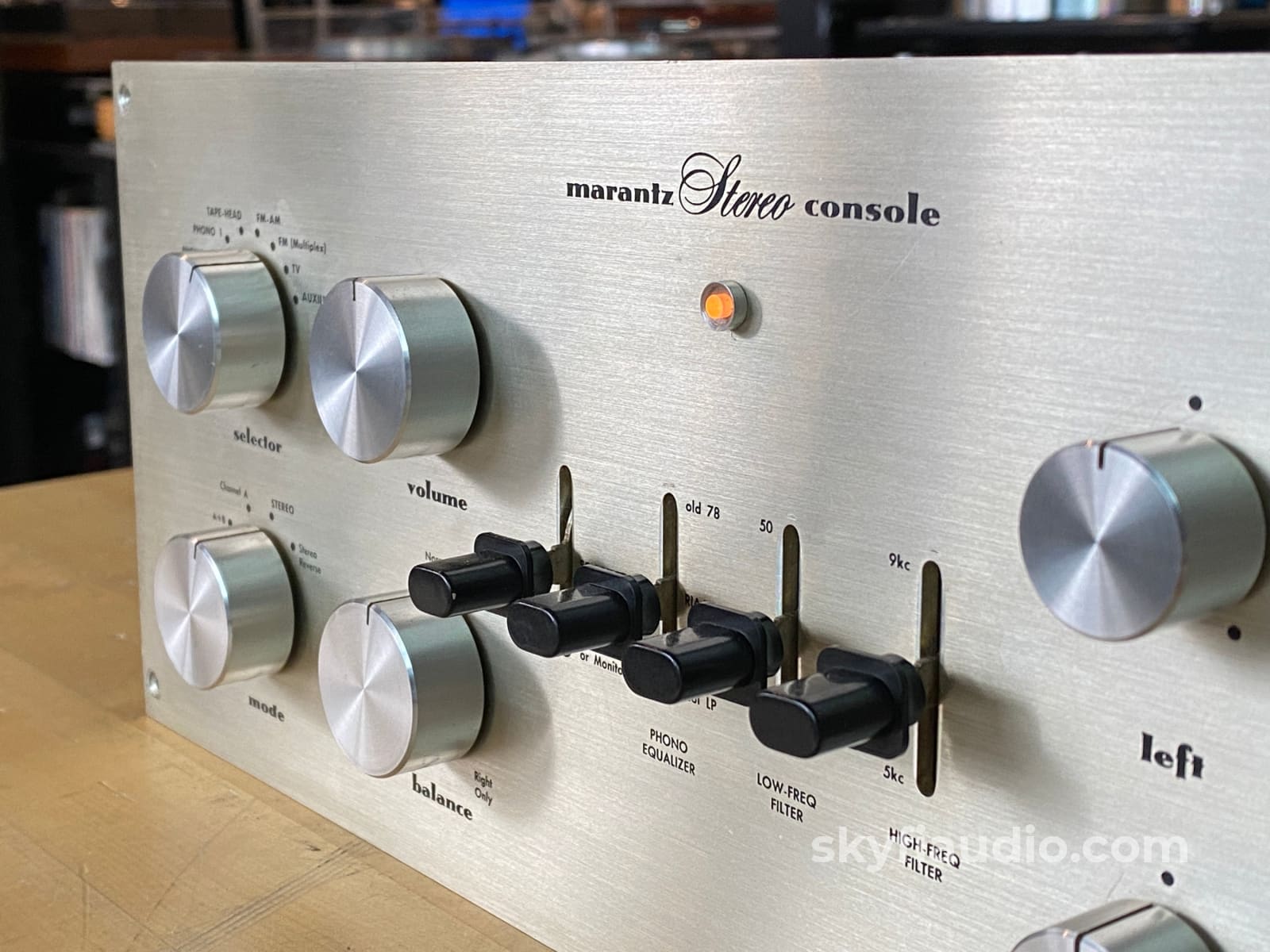
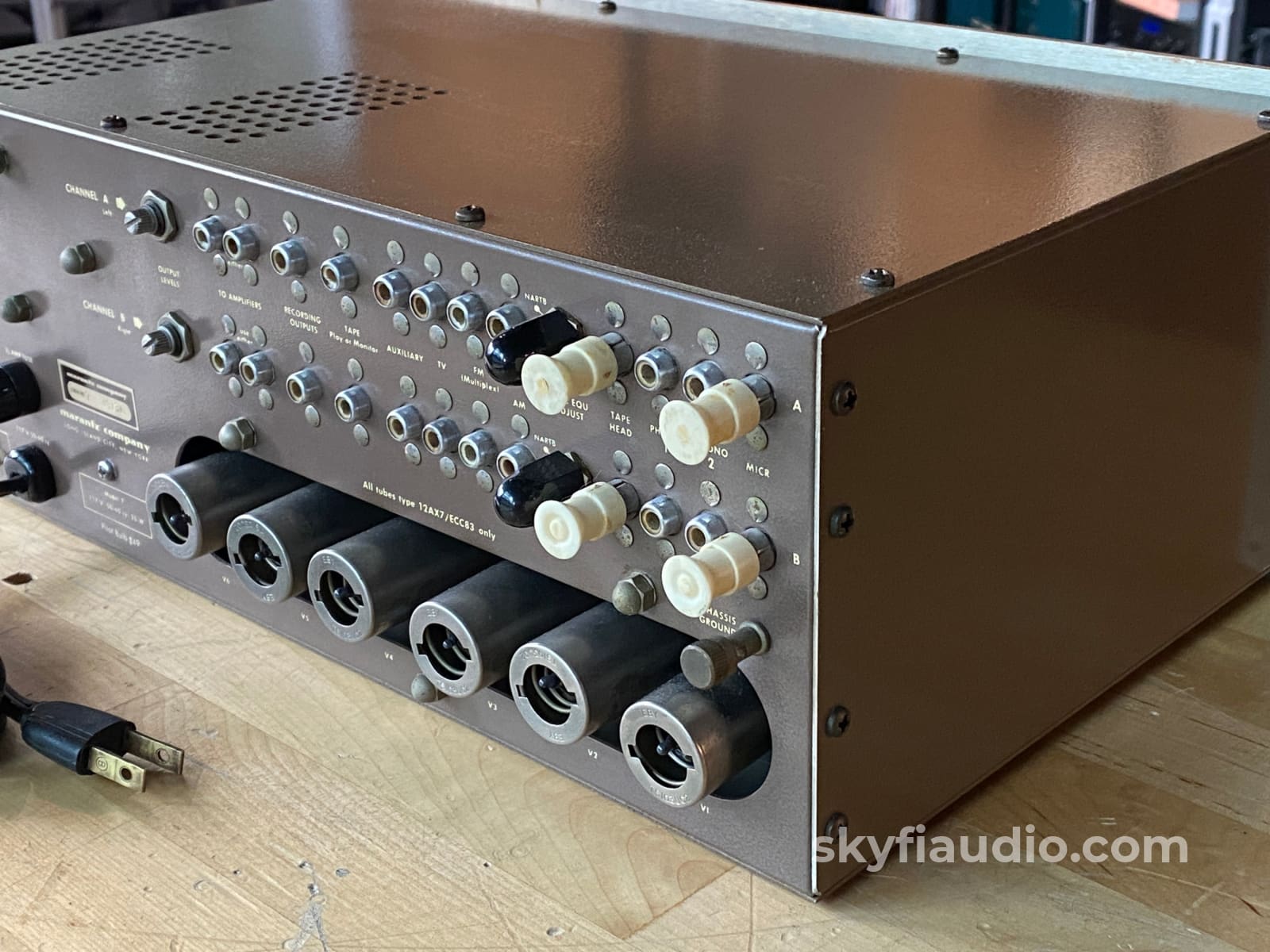
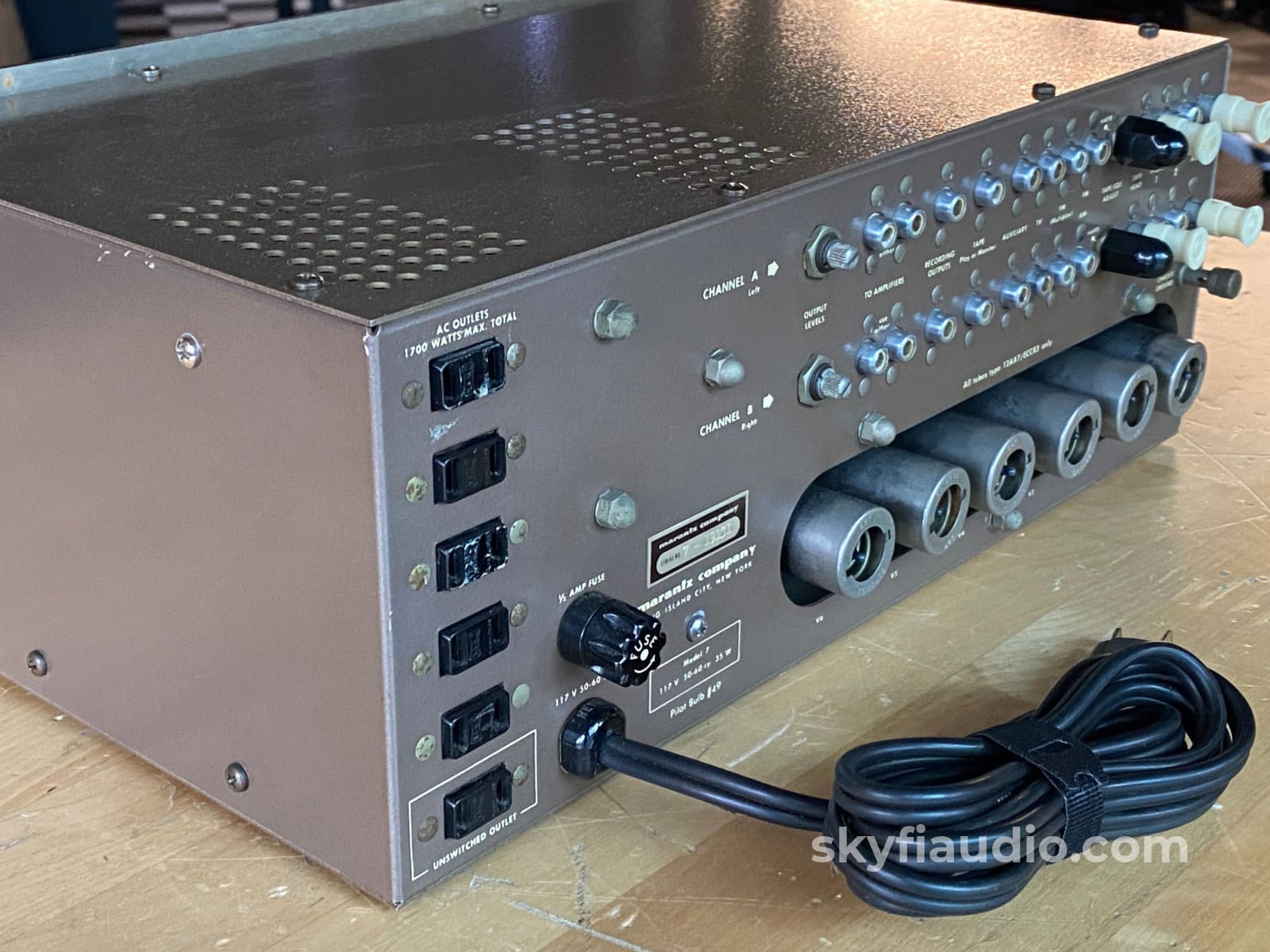
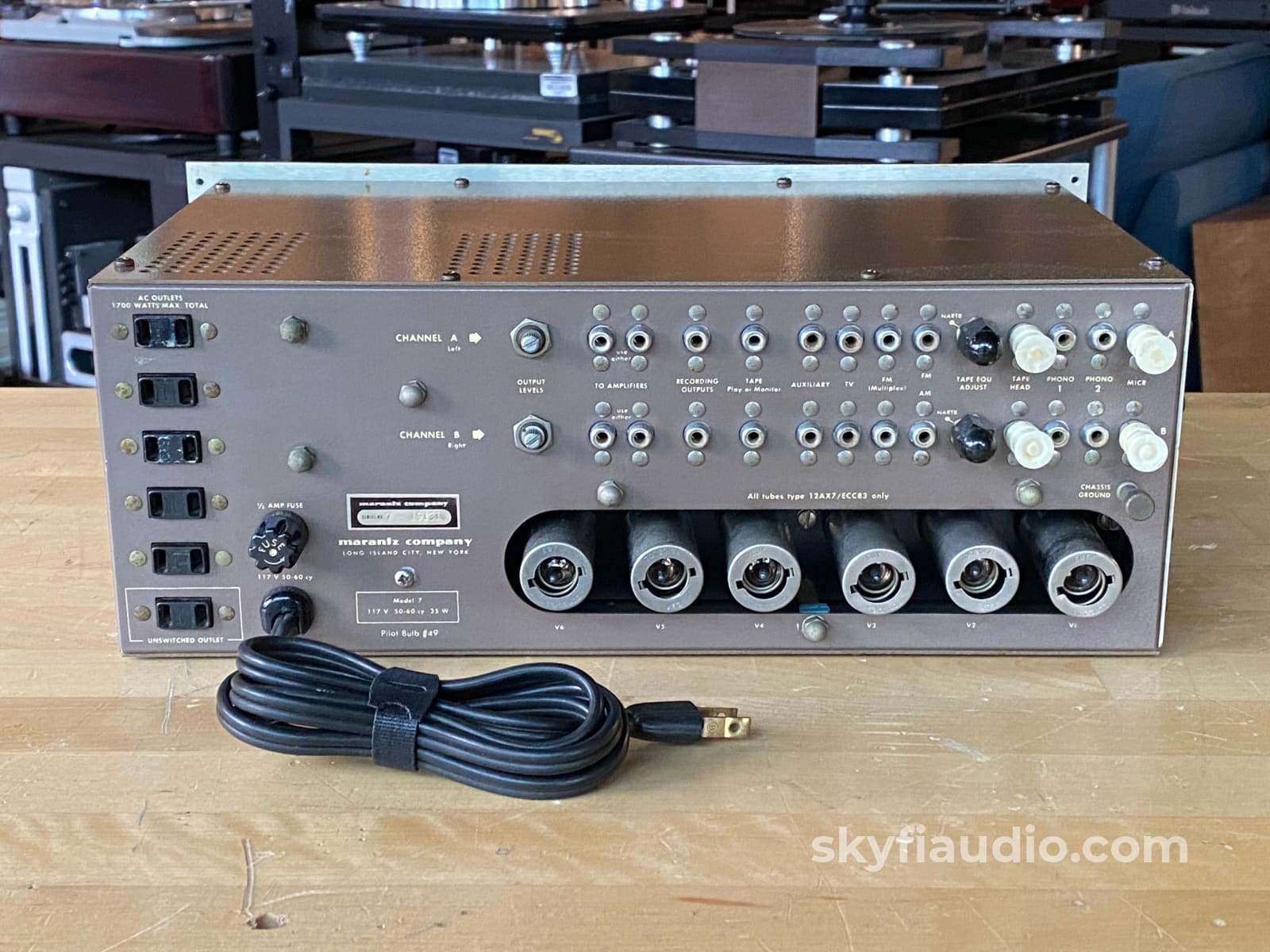
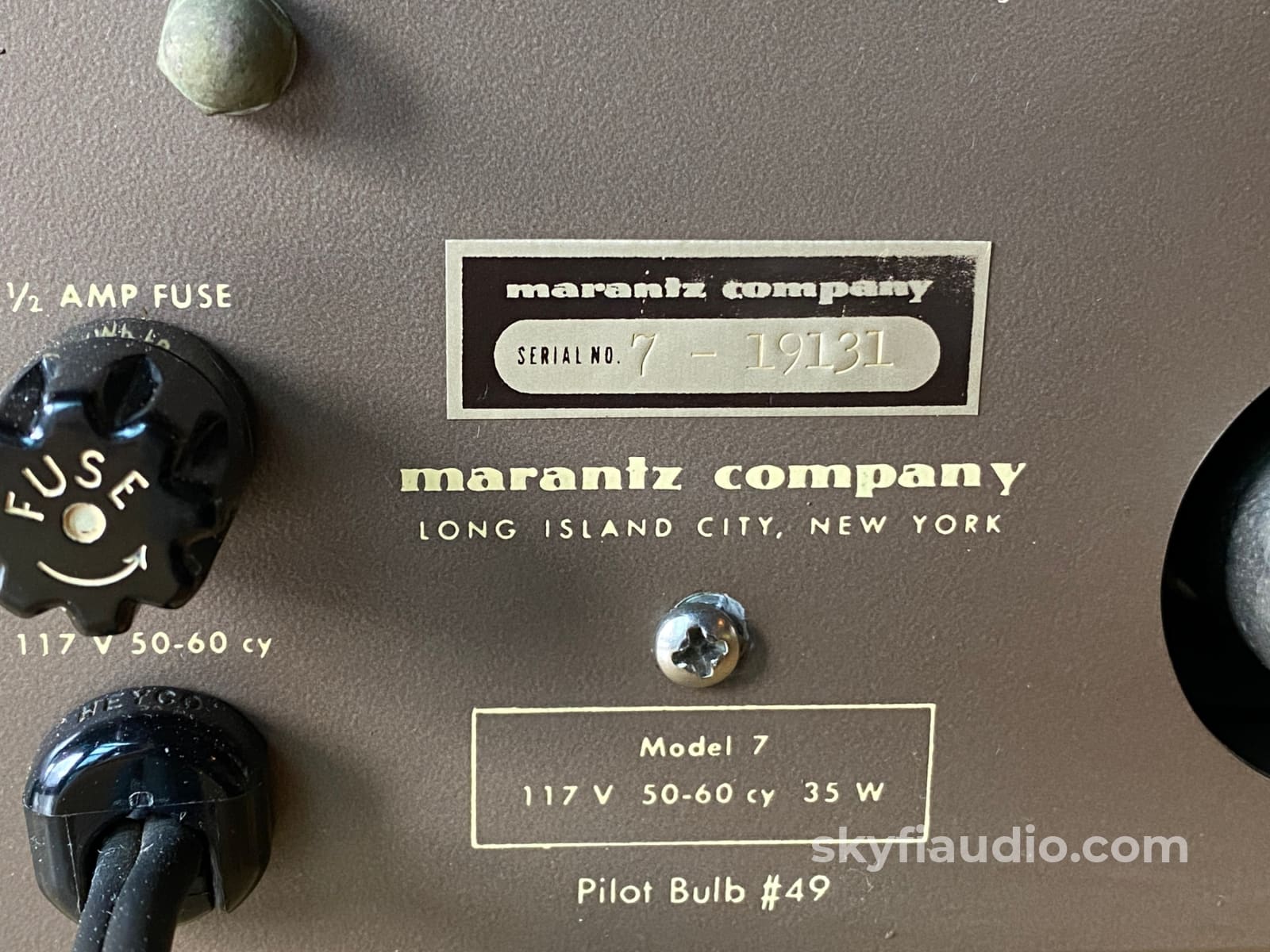
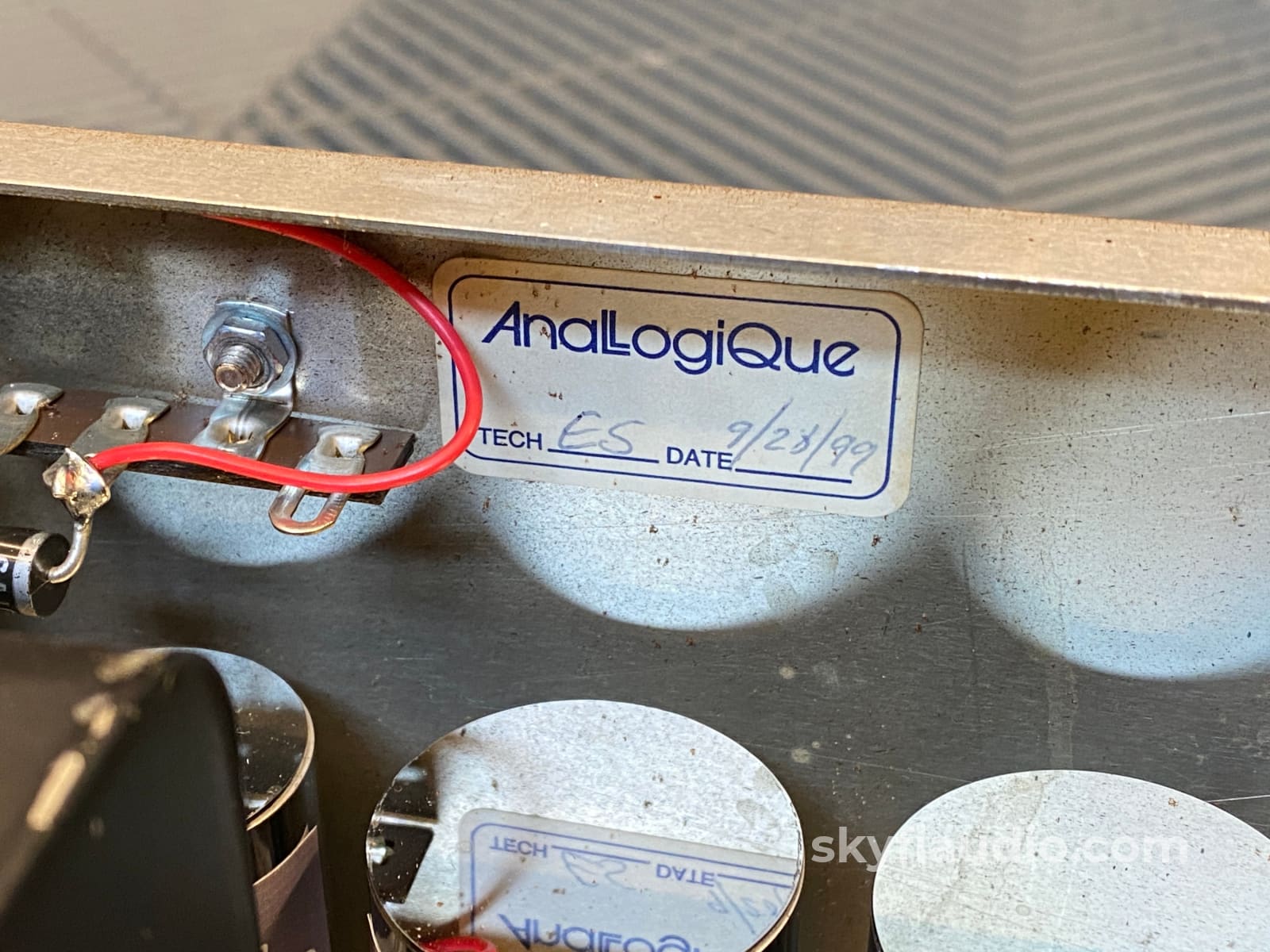
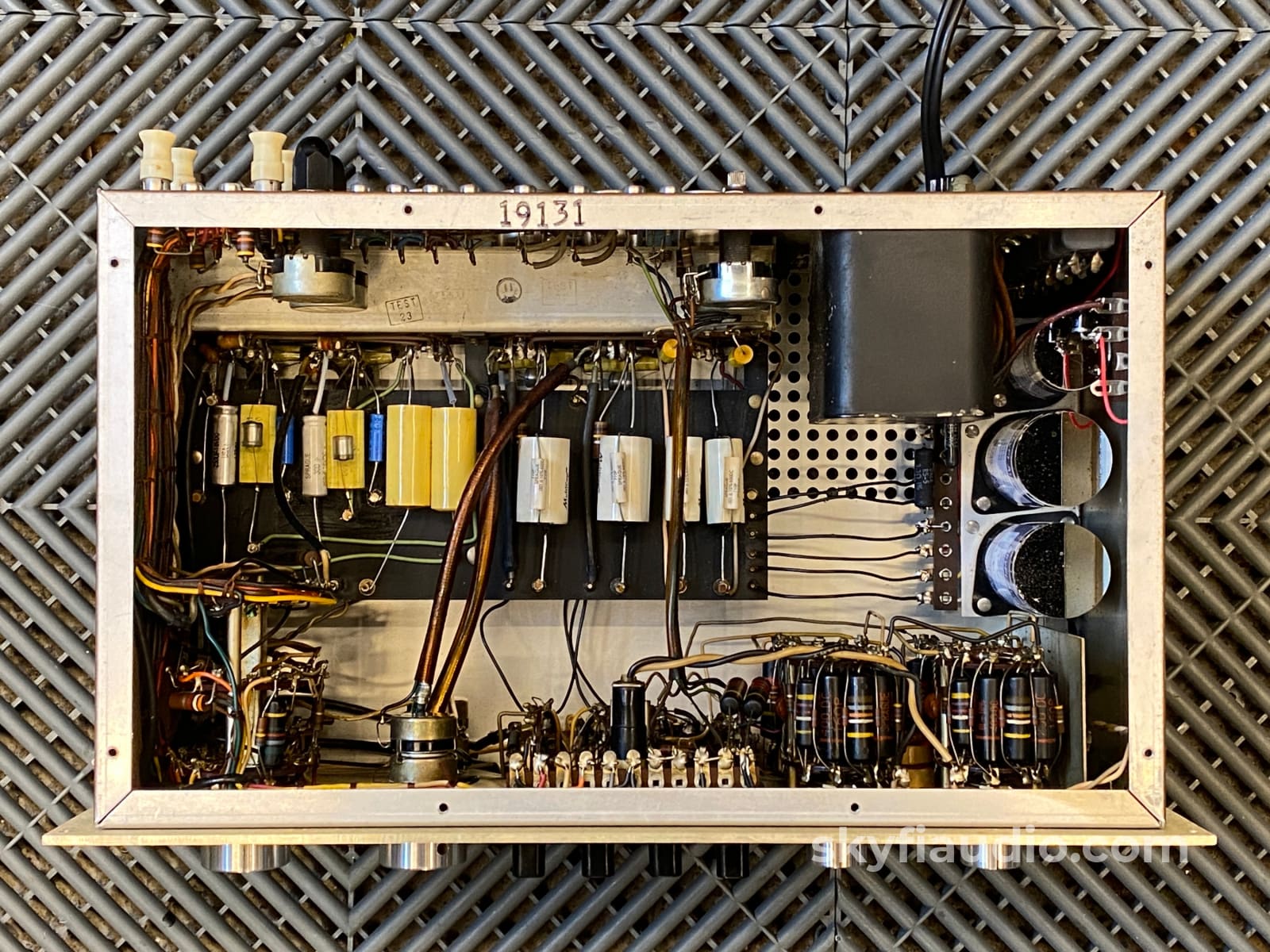
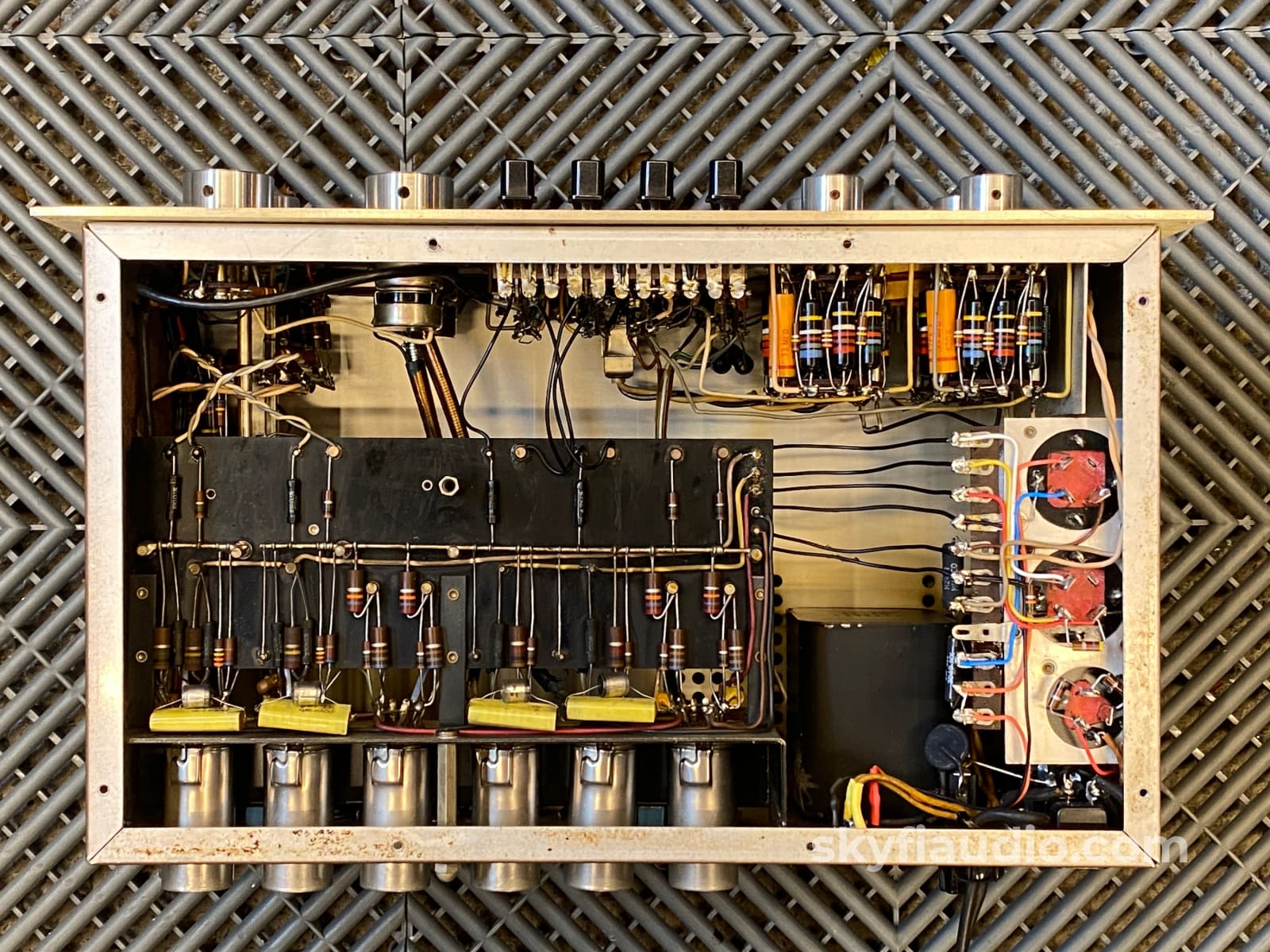
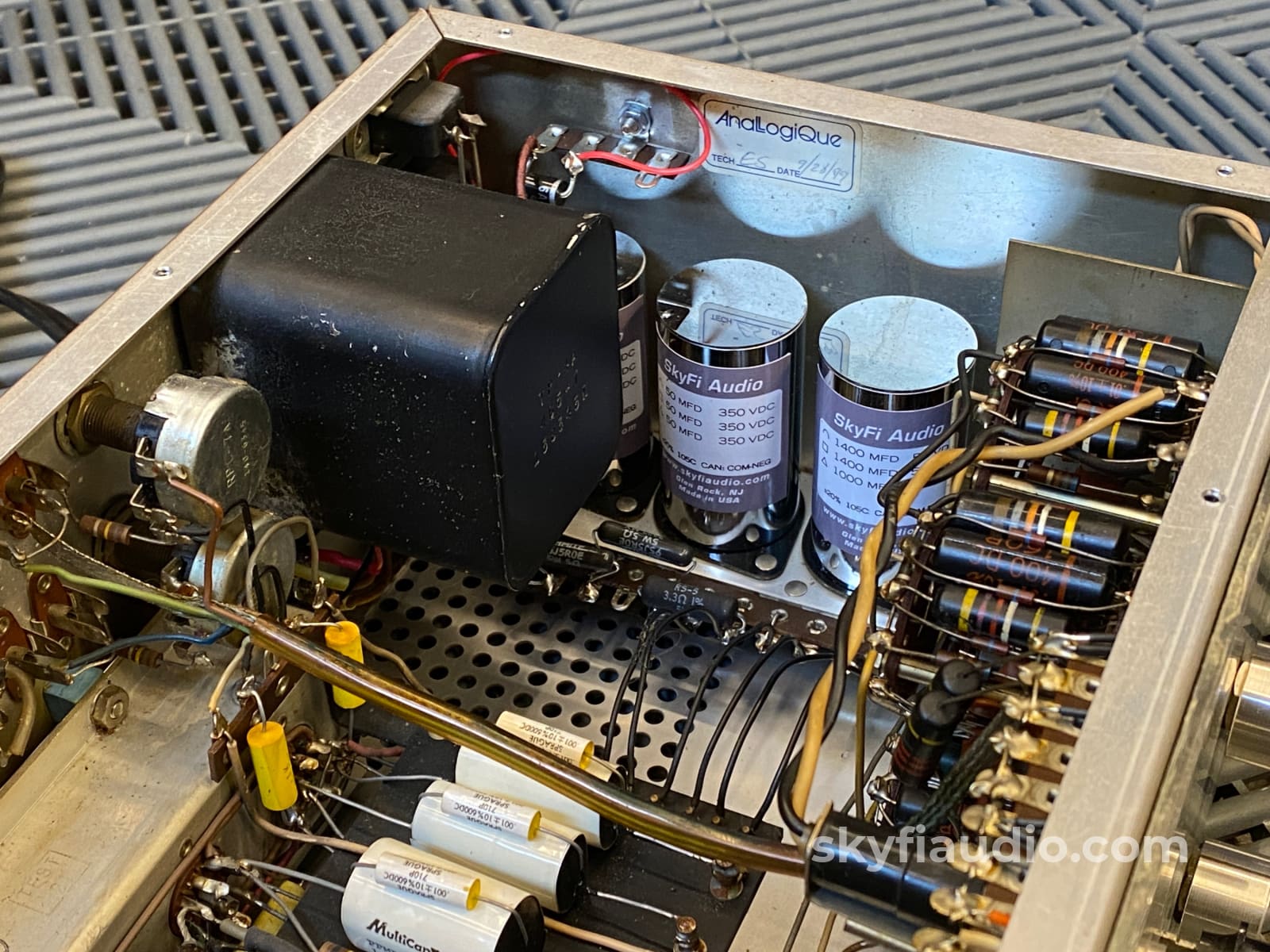
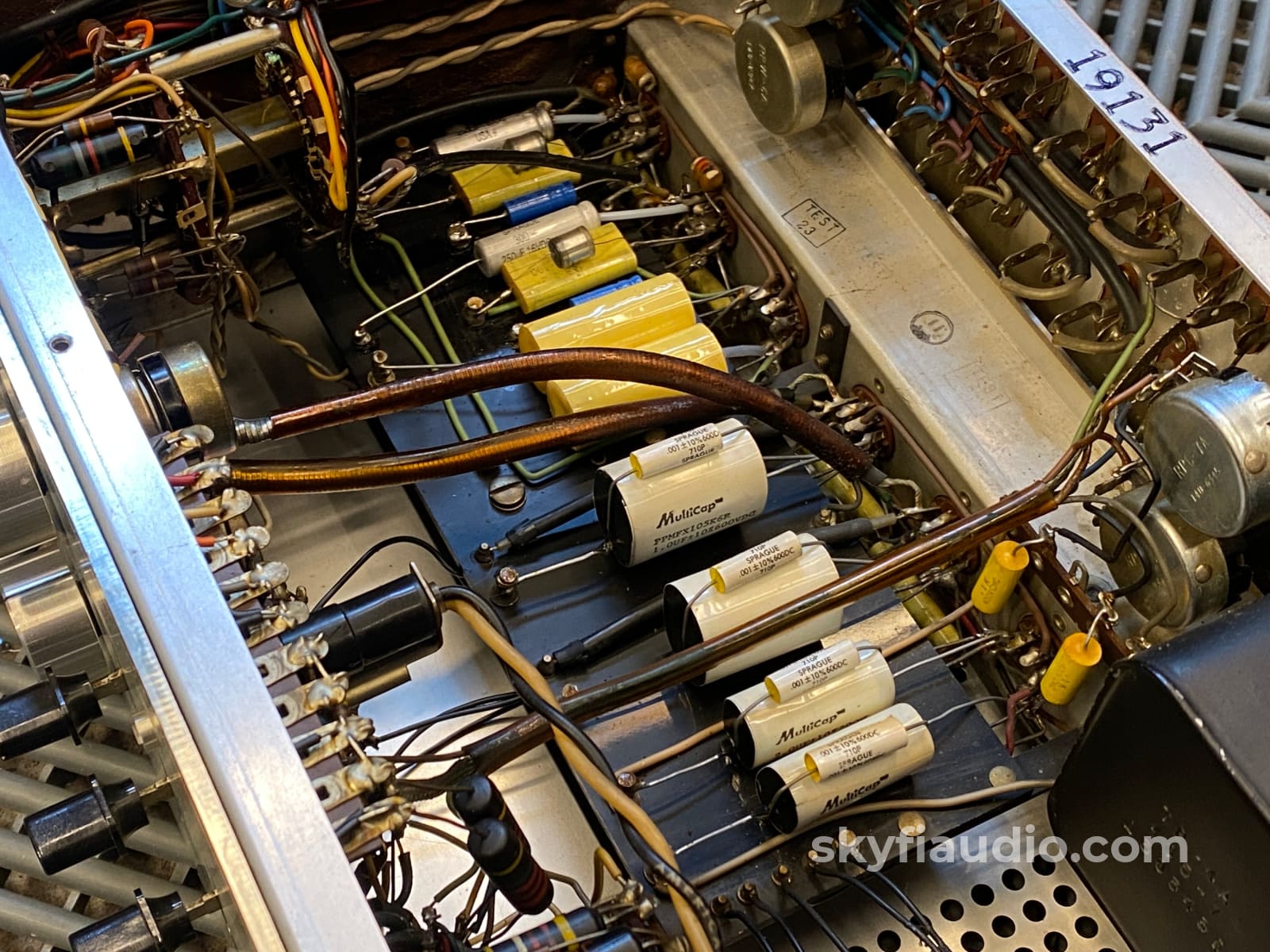
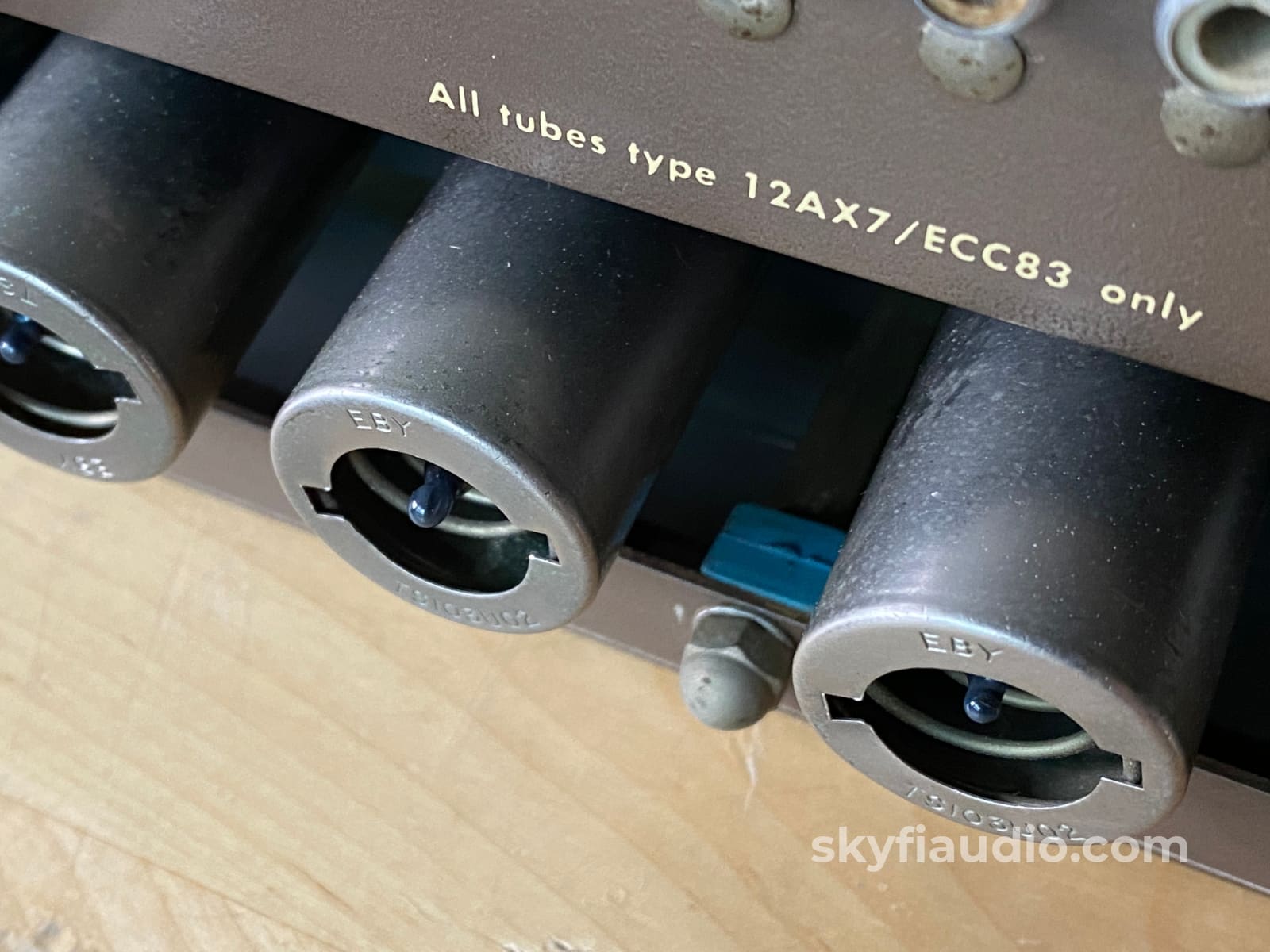
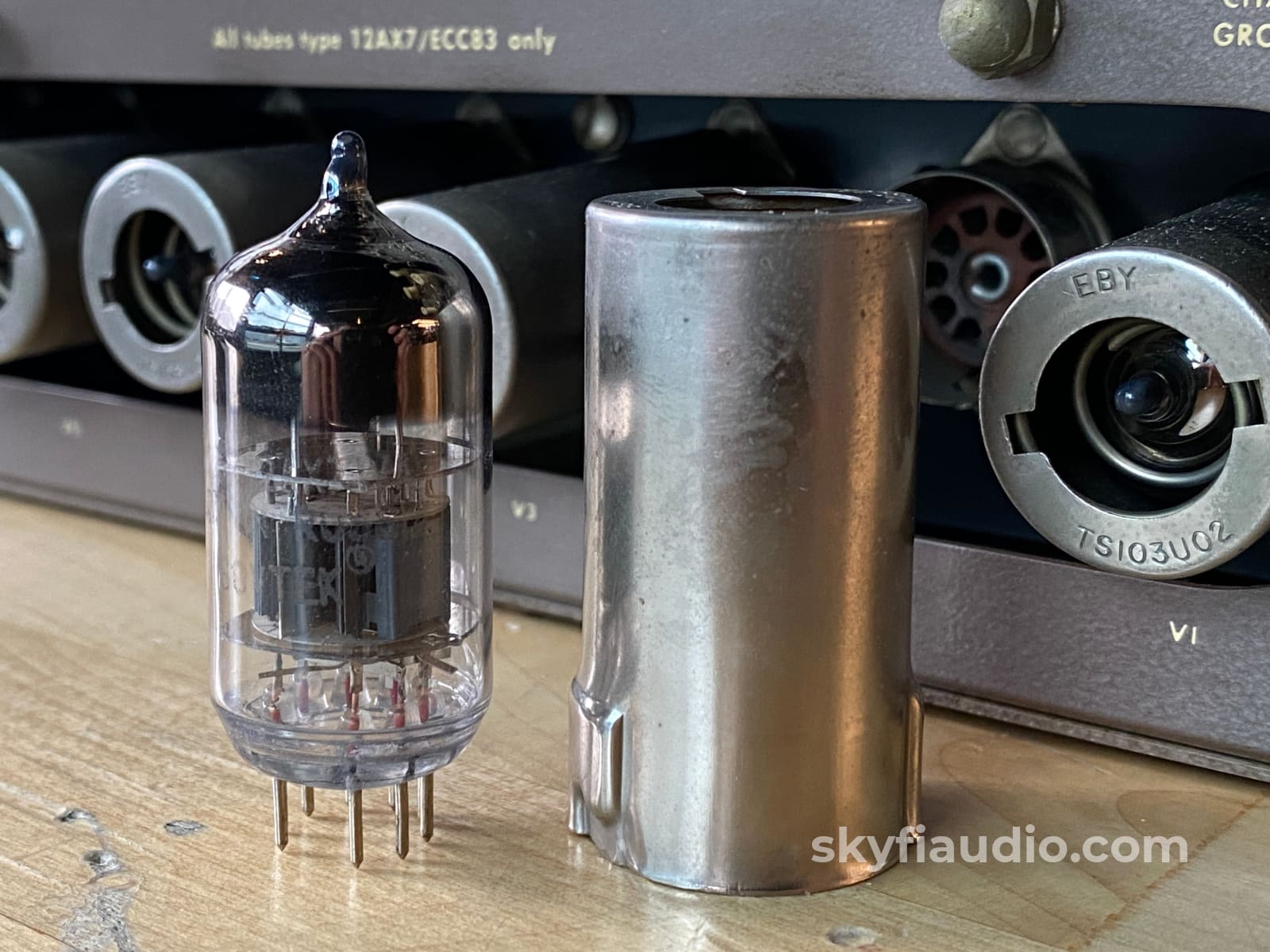
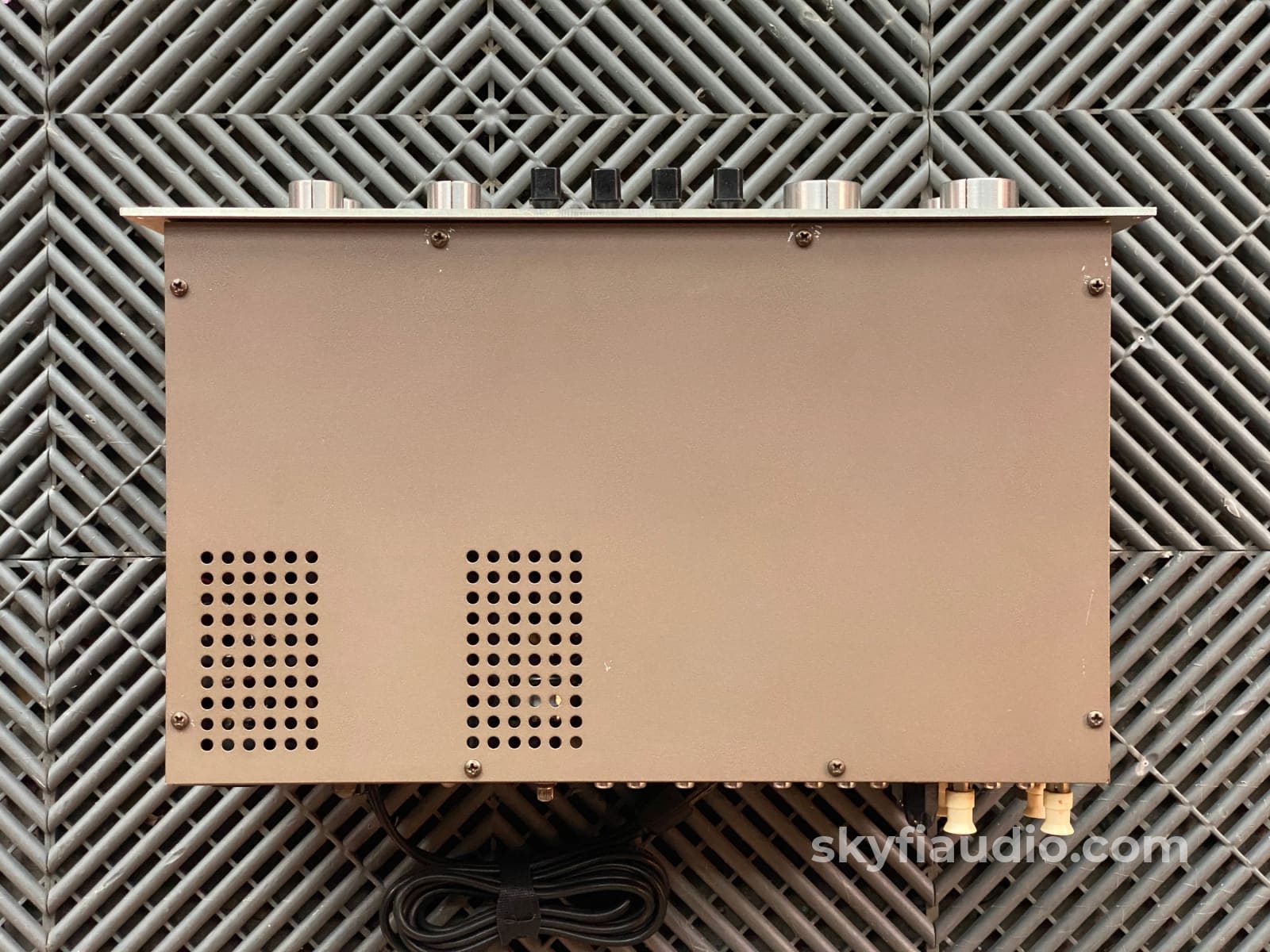
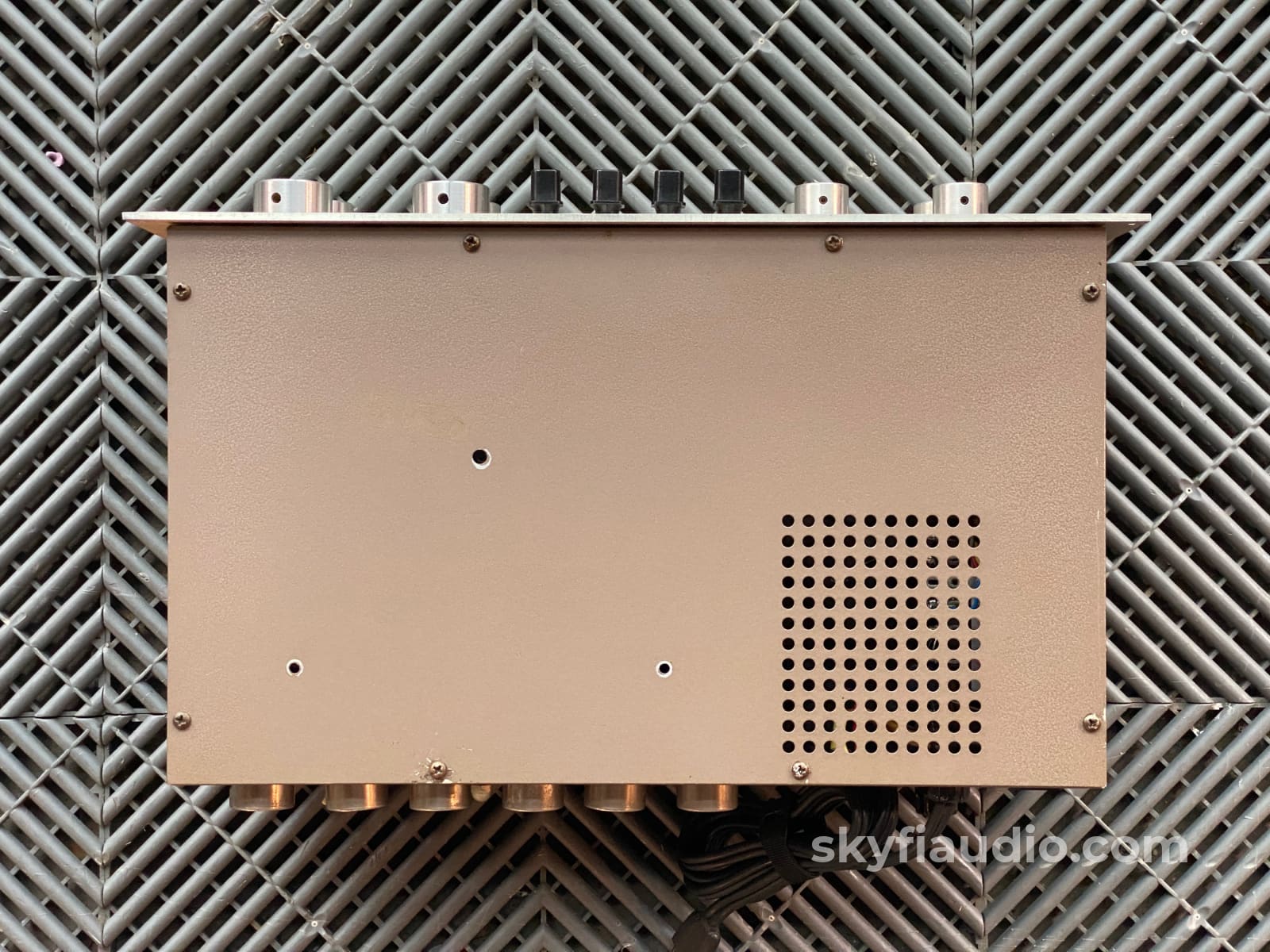
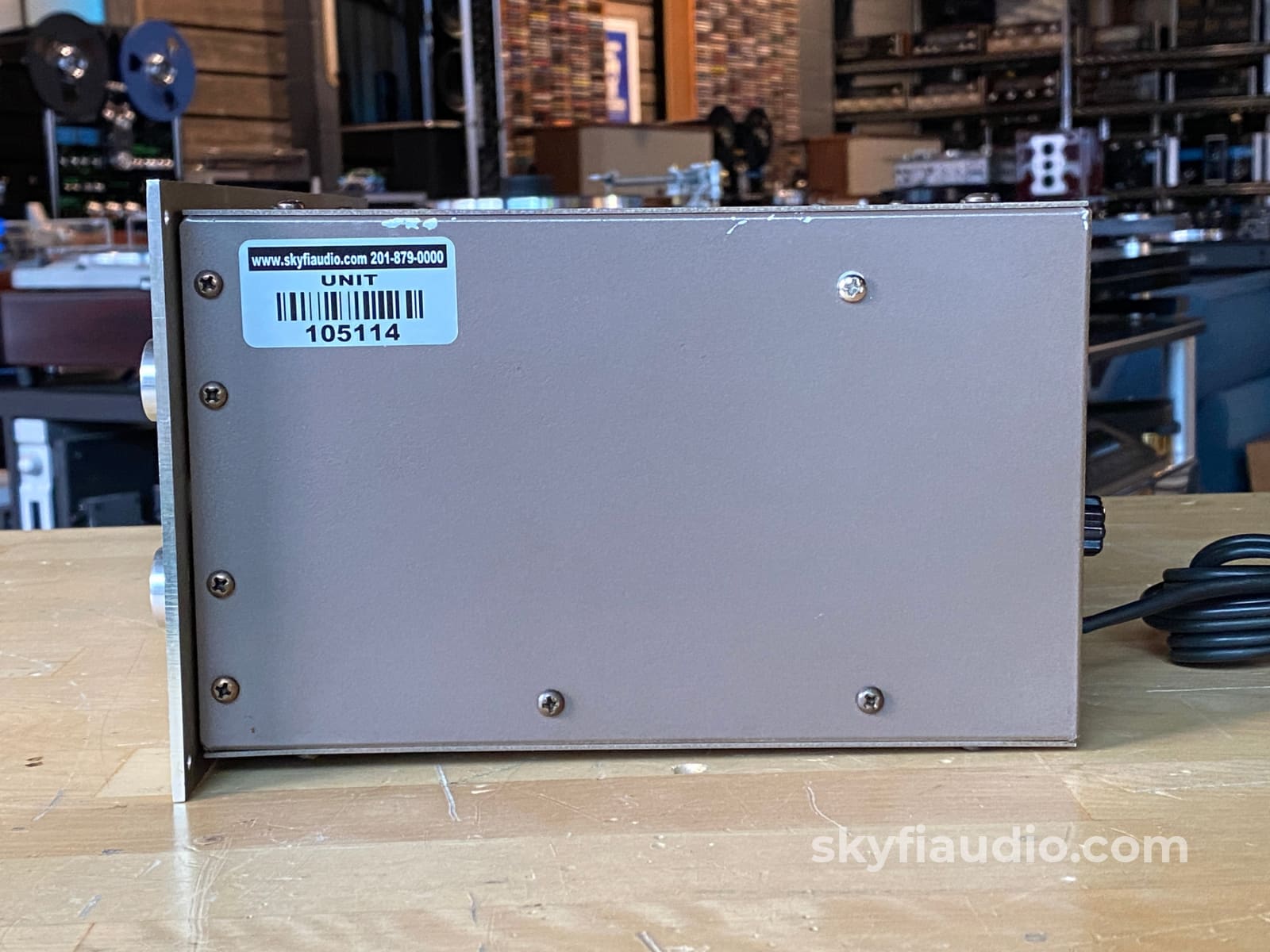
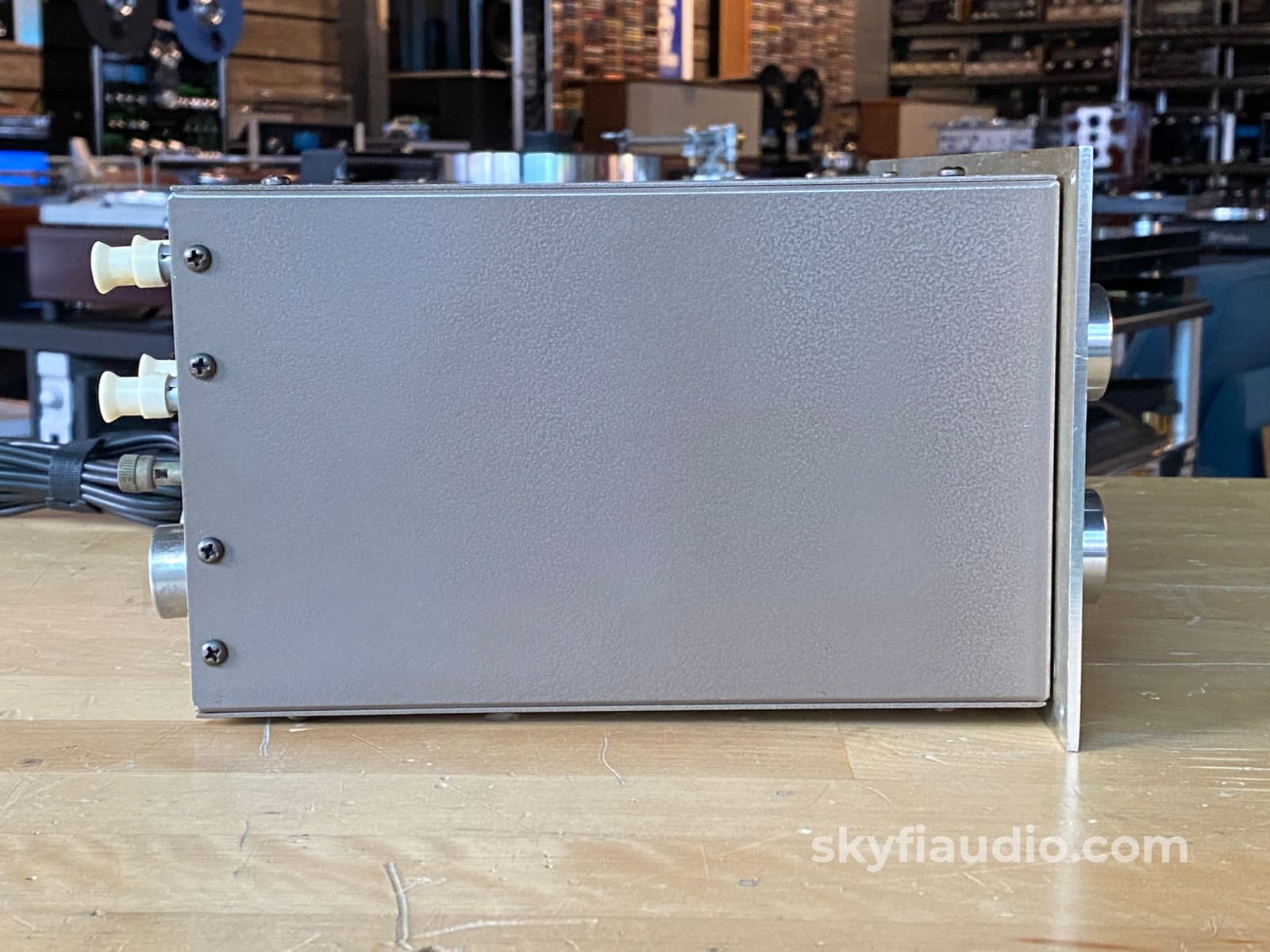
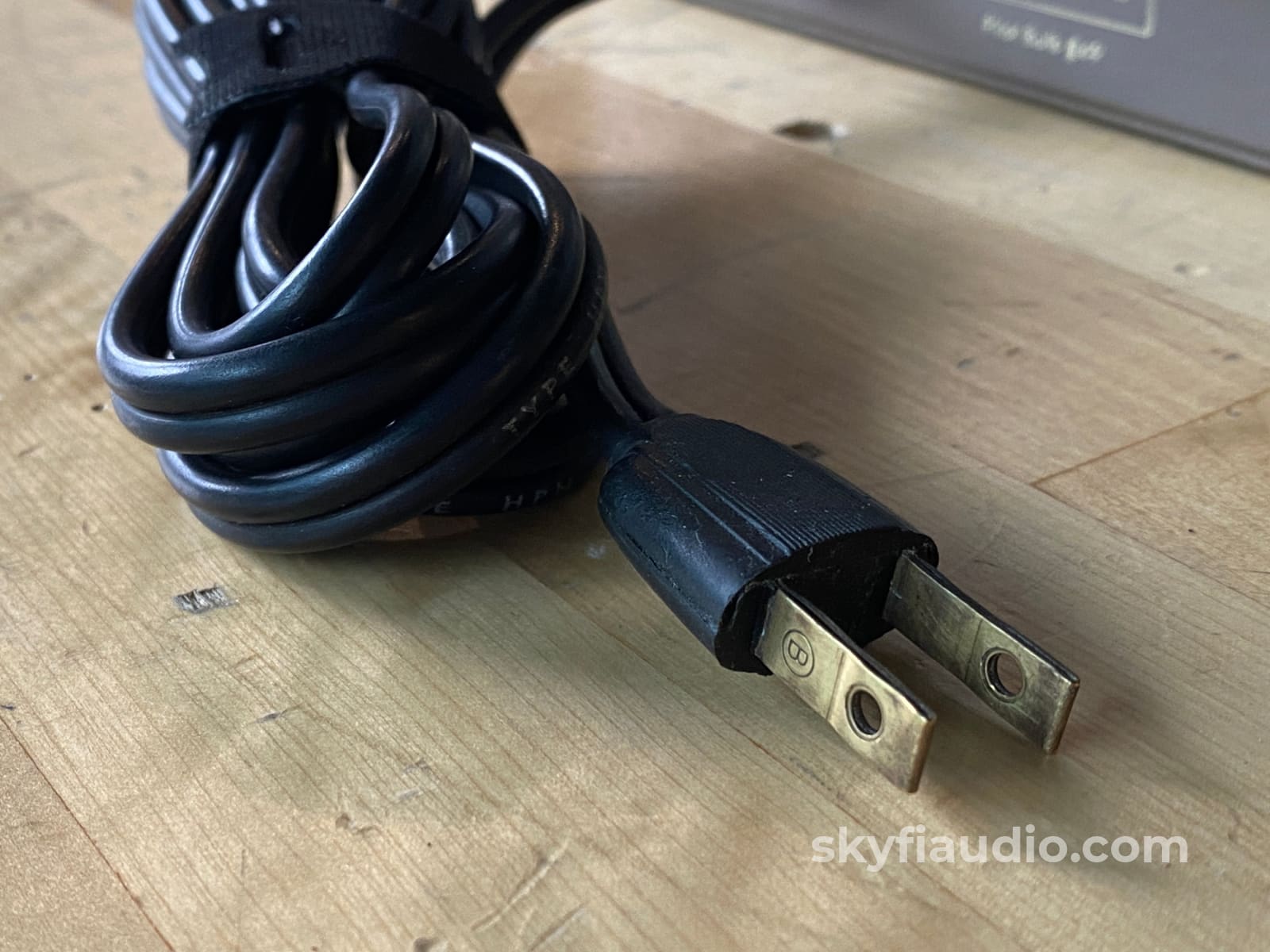
Marantz Model 7 Vintage Tube Preamp - SkyFi Restored, Super Collectible
Free Shipping on Most Electronics - Excludes Speakers and Items Requiring Freight - Contiguous U.S. Only
Pickup currently unavailable at SkyFi 479

Marantz Model 7 Vintage Tube Preamp - SkyFi Restored, Super Collectible
SkyFi 479
479 South Broad Street
Glen Rock NJ 07452
United States
General:
Extremely desirable and collectible vintage tube preamp and the flagship in the Marantz lineup. Not to be confused with the similar looking and less desirable solid state version.
Restored in-house and sounding beautiful.
Looking super sharp in its champagne finish and sporting all the original knobs and switches.
This preamp is a great match to the Model 8 tube amplifier and Model 10B tuner. Both are extremely well regarded.
Check out our YouTube video from a different Marantz 7 we had previously listed for sale for more details:
From The Absolute Sound by Robert Harley "TAS Legacy: Marantz Model 7 Preamplifier:
"The Model 7 was a breakthrough in preamplifier design at its introduction in 1958.
Largely engineered by Saul Marantz, the Model 7 offered dual phono inputs, two tuner inputs, and in a stroke of prescience, a “TV” input. In 1958.
The front panel featured an array of four knobs on each side flanking four toggle switches. The right-side knobs provided independent bass and treble adjustment for each channel. The left-side knobs allowed source selection, volume, balance, and stereo/mono modes.
The center toggle switches were tape monitor, a three-position phono equalization switch (78, Columbia, RIAA), and high- and low-pass filters. Minimalism in preamplifier design had clearly not yet taken hold.
The model number was not on the front panel, just the inscription “Marantz Stereo Console,” with the word “Stereo” in fancy script. The front-panel layout was created by Mr. Marantz, who had a background in drafting, graphic arts, and industrial design.
The circuit was based on three 12AX7s per channel. The phonostage was particularly innovative in its three-stage circuit, which was soon dubbed “the Marantz circuit.” Phono gain was 64.5dB (22.5dB line). The frequency response was 20Hz–20kHz +/- 0.5dB. Noise was -80dB with a 10mV phono input. The unit weighed 20 pounds.
In production for more than 12 years, the Model 7 was the most popular preamplifier of its time, with sales of more than 130,000 units—a staggering number considering its price of $385 ($3,640+ in 2024 dollars). Throughout its 12-year run, the Model 7 remained essentially the same as the prototype, with only minor production updates over the years. The Model 7C simply signified that the chassis was mounted in a wooden case."
SkyFi Cosmetic Notes:
This Marantz 7 shows typical wear for a device of this vintage including light scratching to the painted surfaces and minor faceplate & knob blemishes.
SkyFi Technical Notes:
SkyFi Restoration Notes:
When this unit came to us it already had the signal path paper capacitors replaced by Analogique in 1999. We opted to rework the power supply in addition to ensure long term reliability. We also replaced the aging rubber elements that suspend the preamp sub-chassis, cleaned all of the controls, and detailed the faceplate, knobs, and rear panel.
Volume Control Notes:
We always have to make a decision on whether or not to replace the volume controls on these units. Some have very poor channel balance which makes them difficult to use.
The original volume control in this unit still works surprisingly well with acceptable channel balance for most of its range. It does have some deviation in the 50% to 70% range, but this will likely be above the listening level in most systems. If you'd like to have us replace the volume control with a precision alps unit for an additional charge, please contact us before making your purchase.
Tube Notes:
This preamp is fitted with a set of current production Sovtek 7025 tubes.
Ownership:
Unknown
Connections:
RCA Inputs and Outputs, Captive Power Cord
General Sound:
Smooth, uncolored, undistorted natural and clean
Cosmetic Condition:
8/10 = Very Good. Excellent front faceplate, one minor flaw on chassis side or top. See our detailed rating description here.
Working Condition:
Working perfectly and tested in our lab and listening room.
Included:
Just the unit and power cord.
Packing:
Will be packed using our highly developed in-house process and custom packing materials.Specs:
Tubes:
6 x ECC83/12AX7 Type
Gain - Phono and Tope-head
64-1/2 dB
Microphone
62 dB
High level
22-1/2 dB
At Recording Outout
Phono and Tape-head
42 dB
Microphone
40 dB
High-level
Unity (0 dB)
Frequency Response
Within 1/2 dB from 20 CPS to 20 KC.
IM Distortion - Typical measurements
10 volts equ. peak RMS, 0.1%.
2 volts equ. peak RMS. 0.01%
Total Noise:
In 20 CPS to 20 KC audio range, 80 dB below 10mv phono input with RIAA curve. Hum is far below thermal noise.
The Marantz Company, 25-14 Broadway, Long Island City 6, N.Y.
Dimensions:
Chossis: 14-3/4" W. × 5-3/8" H. x 8⅓" D. Ponel: 15-3/8" W. × 5-3/4" H.
Weight:
16 lbs.
Approximate Age:
1967
Link to Manual:
Click Here
Recommended Cables:
Kimber Kable - RCA Interconnects - Better
Kimber Kable - RCA Interconnects - Best
Kimber Kable - Phono Interconnects
Testing Process:
We start with a visual inspection of all internal components to make sure that there are no signs of heat stress or damage. Capacitors are checked for telltale signs of predictive failure including bulging, shrunken wrappers, or physical leakage. We also inspect the PCBs for discoloration from resistors or transistors that may have been running hot. On vintage units we often spot check select capacitors for value and ESR.
When we first power on a preamplifier we connect its RCA output to a Sencore PA81 Power Analyzer which simulates real world loading conditions and gives us an oscilloscope interface.
The first order of business is checking that the volume control works smoothly throughout its entire range with acceptable channel balance. This is accomplished by feeding a 1 KHz sine wave into one of the preamp’s line level inputs while monitoring the preamp’s output on an oscilloscope.
We then switch to a 1 KHz square wave to test the tone controls, loudness function, and filters where applicable. During this step we are watching for equal alteration of the test signal by both channels. This also helps us identify dirty controls that will need treatment.
Once the basic line stage functions are verified, we test each input individually. This is especially important for devices that use relays to select their sources. If the preamp is equipped with a phono stage we test that as well. We use an inverse RIAA filter which allows us to feed a reference test signal into the phono input with the proper RIAA equalization and level. A square wave or sine sweep is used to verify that the device’s phono stage is faithfully reproducing the RIAA curve. If the preamp under test has balanced inputs and/or outputs these are tested as well.
We finish up our bench testing with a listening test with our bench amplifier and reference speakers. During this test we check for hum or hiss that may not have shown up in earlier testing. We also check that all of the tone controls and filters perform as expected.
If the preamplifier has remote control functions these are also tested. Preamps with tube circuits or complicated power supply topologies are connected at our long term test rig for extended stress testing under real world conditions.
Choose options
